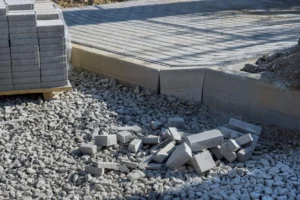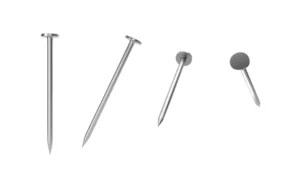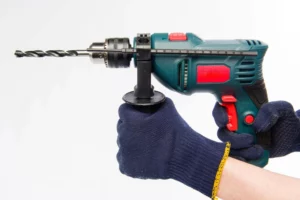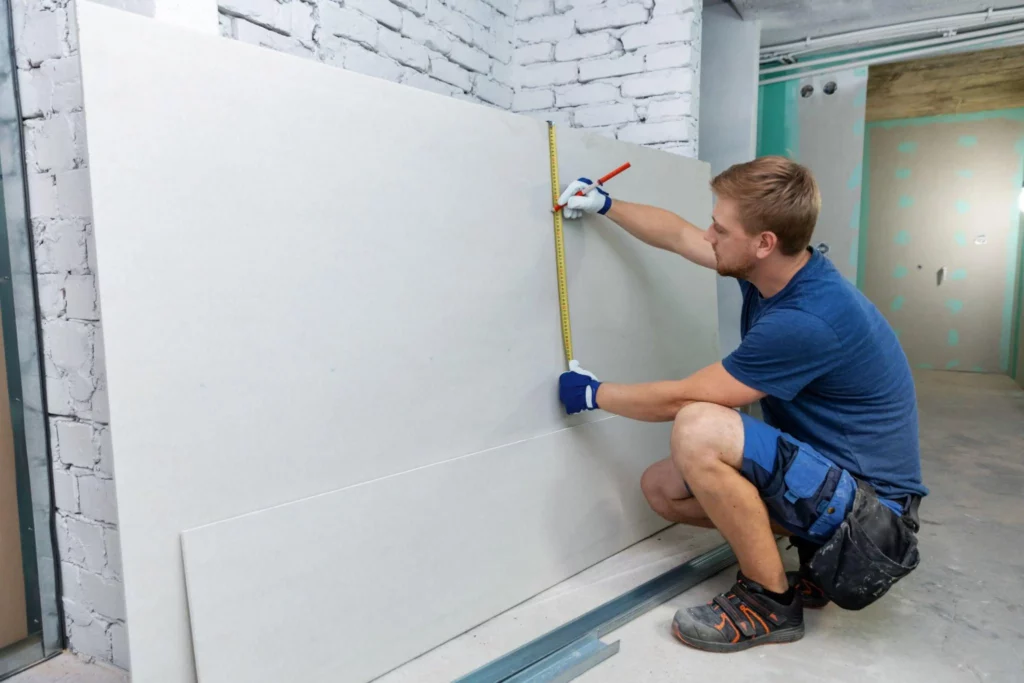Concrete is a versatile and durable building material that has been used in construction for centuries. It’s made from a mixture of cement, water, and aggregate, and can be molded and shaped to fit a variety of needs. One common application for concrete is as a substrate for other building materials, such as plywood. In this article, we’ll discuss how to attach plywood to concrete and provide some tips for ensuring a strong bond between the two materials.
 Types of Concrete
Types of Concrete
Before we get started with the process of how to attach plywood to concrete wall, it’s important to understand the different types of concrete that are available. Each type of concrete has its own unique properties and uses, and choosing the right type for your project is essential for ensuring a successful outcome.
Ready-Mix Concrete
Ready-mix concrete is a pre-mixed concrete that can be purchased at a hardware store or home improvement center. It’s convenient and easy to use, and is suitable for a wide range of projects, including DIY projects. However, it’s important to note that ready-mix concrete may not be as strong as other types of concrete, and may not be suitable for heavy-duty applications.
High-Strength Concrete
High-strength concrete is a type of concrete that has a higher compressive strength than ready-mix concrete. It’s commonly used in commercial and industrial construction projects, where high strength and durability are essential. High-strength concrete is also resistant to weathering and degradation, making it a good choice for outdoor projects.
Fiber-Reinforced Concrete
Fiber-reinforced concrete is a type of concrete that contains fibers, such as steel or synthetic fibers, that add strength and durability to the material. The fibers help to absorb impact and reduce cracking, making fiber-reinforced concrete ideal for projects where high tensile strength is required.
Self-Consolidating Concrete
Self-consolidating concrete is a type of concrete that flows easily and self-compacts, eliminating the need for vibration. It’s commonly used in projects where access is limited, such as in tight spaces or areas with restricted movement. Self-consolidating concrete is also useful for creating smooth, even surfaces, and can be used to create complex shapes and designs.
Fastening Plywood to Concrete
Now that we’ve discussed the different types of concrete, let’s move on to the process of attaching plywood to concrete. There are several ways to do this, including using screws, nails, and adhesives.
Screws
Screws are a popular choice for attaching plywood to concrete because they offer a strong and secure hold. There are several types of screws available, including concrete screws and drywall screws. Concrete screws have coarse threads that grip the concrete, while drywall screws have finer threads that are better suited for softer materials like wood. When using screws to attach plywood to concrete, it’s important to predrill holes to avoid splitting the concrete. The holes should be slightly smaller than the diameter of the screw, and should be countersunk to allow for a flush finish.
Nails
Nails are another option for attaching plywood to concrete. They are simpler to use than screws, but may not be suitable for heavy-duty applications. When using nails, it’s important to choose the right length and gauge for the thickness of the plywood and the hardness of the concrete. Nails should be driven into the concrete at a 45-degree angle to minimize the risk of splitting.
Adhesives
Adhesives, such as epoxy or polyurethane, can be used to bond plywood to concrete. This method is suitable for lighter-duty applications and provides a flexible bond between the two materials. When using adhesives, it’s important to clean the surface of the concrete thoroughly to remove any dirt or oils that could interfere with the bond. The adhesive should be applied to both the plywood and the concrete, and allowed to set according to the manufacturer’s instructions.
Tips for Attaching Plywood to Concrete
- Use the right fasteners: Make sure you use fasteners that are appropriate for the type of concrete and plywood you’re working with. For example, if you’re working with softwood plywood, you may want to use nails or screws with a coarse thread to ensure a secure hold. If you’re working with harder concrete, you may need to use specialized fasteners designed specifically for concrete.
- Predrill holes: To avoid splitting the concrete, it’s important to predrill holes for your fasteners. Use a drill bit that’s slightly smaller than the diameter of the fastener, and make sure the hole is deep enough to accommodate the full length of the fastener.
- Countersink the holes: After drilling the holes, use a countersink bit to create a conical hole that will allow the head of the fastener to sit below the surface of the concrete. This will help to create a flush finish and prevent the fastener heads from protruding from the surface.
- Apply a bonding agent: To ensure a strong bond between the plywood and the concrete, apply a bonding agent to the surface of the concrete before attaching the plywood. This will help the adhesive or fasteners adhere more effectively to the concrete.
- Use a level:
 When attaching the plywood to the concrete, use a level to ensure that the panels are properly aligned. You don’t want to end up with uneven or crooked panels, as this can compromise the structural integrity of the finished product.
When attaching the plywood to the concrete, use a level to ensure that the panels are properly aligned. You don’t want to end up with uneven or crooked panels, as this can compromise the structural integrity of the finished product. - Add support: Depending on the size and weight of the plywood panels, you may need to add additional support to ensure that they don’t sag or bow under pressure. This can include installing additional framing members or using metal brackets to reinforce the connections between the plywood and the concrete.
- Seal the edges: Finally, once the plywood is attached to the concrete, seal the edges to prevent moisture from entering the gap between the two materials. This can be done by applying a bead of caulk or sealant along the edges of the plywood, then smoothing it out with a wet finger or a putty knife.
By following these tips, you should be able to successfully attach plywood to concrete and create a strong, durable structure that will last for years to come. Just remember to take your time, follow safety guidelines, and use the right tools and materials to ensure a professional-quality result.For more informative blogs and articles visit our website https://cronusconcrete.com/
Frequently Asked Questions
Q: What type of screws are best for attaching plywood to concrete?
A: Concrete screws or lag screws are ideal for attaching plywood to concrete. They have coarse threads that provide a secure hold in the concrete.
Q: Do I need to predrill holes for screws when attaching plywood to concrete?
A: Yes, it’s important to predrill holes for screws to avoid splitting the concrete. Use a drill bit that’s slightly smaller than the diameter of the screw.
Q: How do I ensure a flush finish when attaching plywood to concrete?
A: Use a countersink bit to create a conical hole that allows the head of the screw or nail to sit below the surface of the concrete. This will help create a flush finish.
Q: Can I use nails to attach plywood to concrete?
A: Yes, nails can be used to attach plywood to concrete, but they may not be suitable for heavy-duty applications. Choose nails that are appropriate for the thickness of the plywood and the hardness of the concrete.
Q: How do I ensure a flush finish when attaching plywood to concrete?
A: Use a countersink bit to create a conical hole that allows the head of the screw or nail to sit below the surface of the concrete. This will help create a flush finish.
